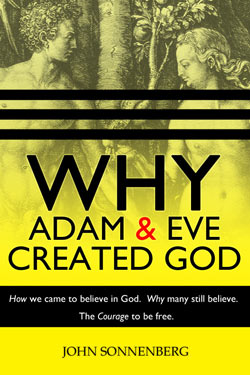Chapter 25 – Millionaires for God
So far, we have been discussion reasons why we have a propensity to believe. Besides group dynamics, these have all been internal motivations—things within us that religion can trigger. These internal motives give us a willingness to accept ideas that we may not have otherwise let in. But there is one very notable external reason people accept a faith in God. It’s also a primary argument that God exists at all. It is the fact that God is everywhere. I’m not referring to God, the spirit of the wind, water, earth and sky. I’m referring to the God on our coins, on TV, published in books, pandered on radio, and printed on Christmas cards. Since Sumerian with their cuneiform and Egyptians in their hieroglyphics recorded God, the faithful have utilized the modern methods of communication to tell their stories and spread their God. Even when hand-copying was the only mean of making a book, the church had the most efficient system of producing and distributing them. This made religious material, and particularly the Bible, the most widely available book. The Protestant reformation started when true mass-media was invented. Johann Gutenburg’s moveable-type printing press made books affordable, and knowledge became power. Within the fifty years, the number of books inEurope went from 30,000 to over 9,000,000. Martin Luther was one of the first to utilize the power of this new mass-media and printing became one of the most mighty man-made forces on earth. A single person can easily reach millions by publishing a pamphlet or getting a story printed in a paper. Radio and television came along and gave the preachers new ways to touch the lives of others. Now with the emergence of the Internet, global exposure of any idea is almost a trivial task.
This is only a short summary of this topic. To find out more, please get Why Adam and Eve Created God.

Leave a Reply
You must be logged in to post a comment.